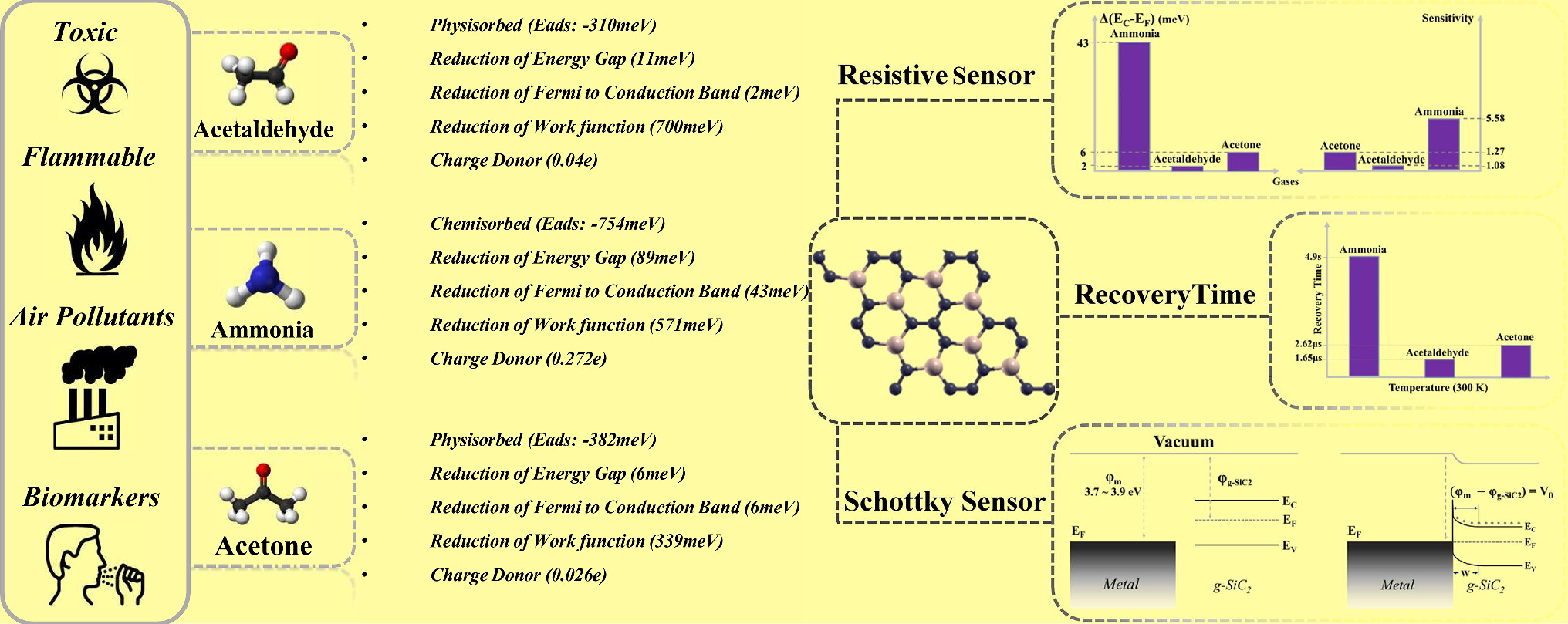https://doi.org/10.1140/epjp/s13360-024-05344-3
Regular Article
The potential application of SiC2 monolayer in sensing acetaldehyde, acetone, and ammonia gases as health screening biomarkers and air pollutants: a DFT study
Department of Electrical Engineering, Shiraz Branch, Islamic Azad University, Shiraz, Iran
Received:
24
March
2024
Accepted:
5
June
2024
Published online:
2
July
2024
Acetaldehyde, acetone, and ammonia are known as air pollutants. They are also considered as biomarkers of some serious diseases. In this study, the potential of the g-SiC2 monolayer to detect these gases was investigated using the dispersion-corrected density functional theory. Our calculations show that acetaldehyde and acetone molecules are physisorbed on g-SiC2, while ammonia is chemisorbed. The adsorption energy levels predict easy desorption and the possibility of using g-SiC2 as a reversible sensor for the investigated gases. To design the sensor related to the studied gases and to investigate the change in the electronic properties of the monolayer in the presence of these gases, the band structure, density of states, and work function of the g-SiC2 before and after gas adsorption were calculated. Based on the obtained results, the distance between the Fermi level and the conduction band minimum and the work function of the monolayer are changed in the presence of studied gases. Due to these outcomes, resistive and Schottky gas sensors are proposed. The resistive g-SiC2 sensor shows good selectivity to ammonia gas compared to the other two gases. Also, the Schottky sensor with high sensing response with the possibility to adjust its selectivity by changing the bias voltage is designed.
Copyright comment Springer Nature or its licensor (e.g. a society or other partner) holds exclusive rights to this article under a publishing agreement with the author(s) or other rightsholder(s); author self-archiving of the accepted manuscript version of this article is solely governed by the terms of such publishing agreement and applicable law.
© The Author(s), under exclusive licence to Società Italiana di Fisica and Springer-Verlag GmbH Germany, part of Springer Nature 2024. Springer Nature or its licensor (e.g. a society or other partner) holds exclusive rights to this article under a publishing agreement with the author(s) or other rightsholder(s); author self-archiving of the accepted manuscript version of this article is solely governed by the terms of such publishing agreement and applicable law.





